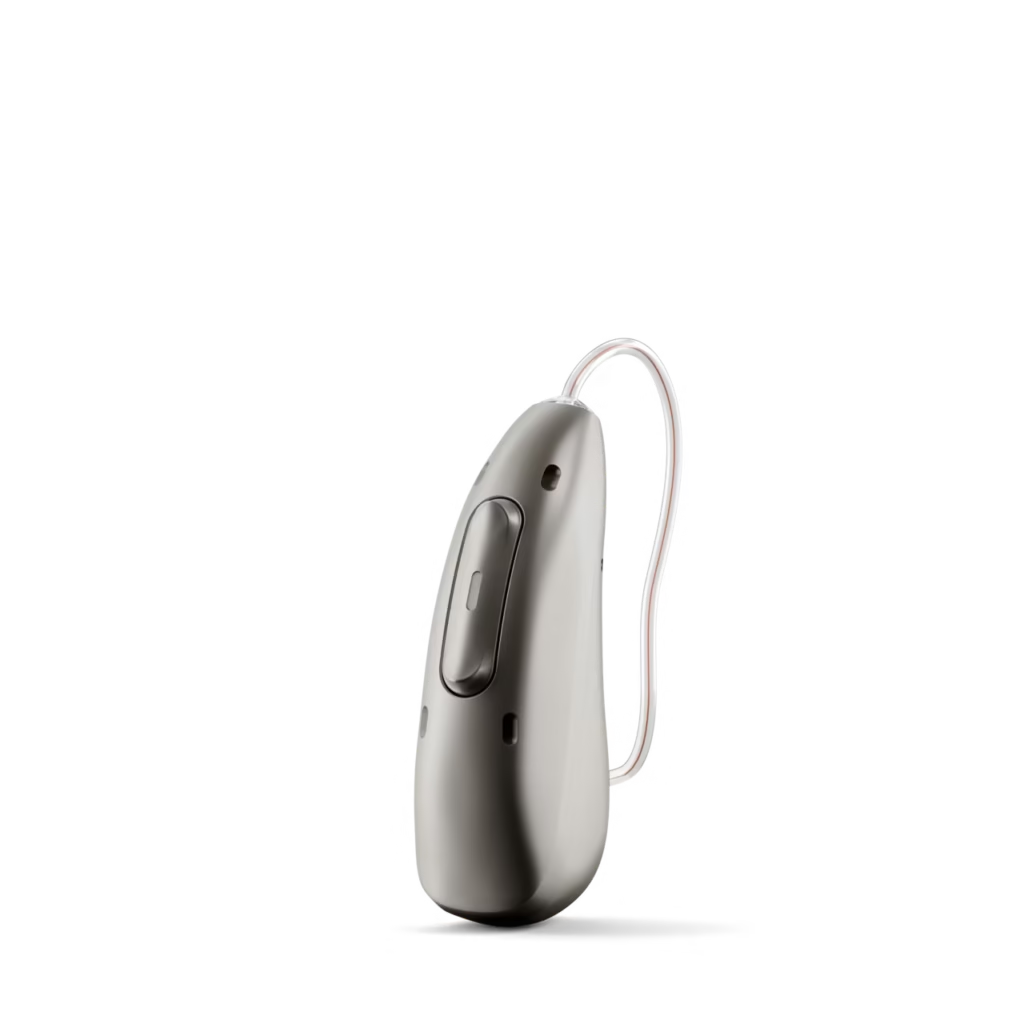So, you’ve recognized the signs of hearing loss and understand the incredible benefits that hearing aids can bring to your life. The next step is choosing the right device, which can feel overwhelming with the variety of options available. Today’s hearing aids are marvels of technology, offering different styles, features, and levels of sophistication. This guide will help you navigate the choices and understand what to consider when selecting a hearing aid with your hearing healthcare professional.
1. Understanding Different Hearing Aid Styles
Hearing aids come in several styles, each designed to suit different types of hearing loss, lifestyle needs, and cosmetic preferences:
- Behind-The-Ear (BTE): These sit comfortably behind the ear, with a tube connecting to an earmold or a slim tube with a dome that fits in the ear canal. BTEs are versatile, suitable for almost all types of hearing loss, and are often easier to handle for those with dexterity issues.
- Receiver-In-Canal (RIC) / Receiver-In-The-Ear (RITE): Similar to BTEs, but the receiver (speaker) is placed directly in the ear canal, connected by a thin wire. This often results in a clearer, more natural sound and a smaller behind-the-ear component. They are very popular and discreet.
- In-The-Ear (ITE): These are custom-made to fit the outer part of the ear. They are generally easier to handle than smaller custom styles and can accommodate more features.
- In-The-Canal (ITC): Smaller than ITEs, these are custom-made to fit partly in the ear canal. They are less visible but may not be suitable for severe hearing loss or those with very small ear canals.
- Completely-In-Canal (CIC) & Invisible-In-Canal (IIC): These are the smallest and most discreet options, fitting deep within the ear canal. While offering excellent cosmetic appeal, they may have fewer features due to their size.
2. Key Features to Consider
Modern hearing aids are packed with technology. Your audiologist will help determine which features are most important for you:
- Noise Reduction: Helps to filter out background noise, making it easier to focus on speech in challenging listening environments.
- Directional Microphones: Focus on sound coming from a specific direction (usually in front of you), improving speech understanding in noisy situations.
- Bluetooth Connectivity: Allows you to stream audio directly from your smartphone, TV, and other Bluetooth-enabled devices to your hearing aids. This is great for phone calls, music, and more.
- Rechargeable Batteries: Many new hearing aids come with rechargeable options, eliminating the need to frequently change small disposable batteries.
- Telecoil (T-coil): A small copper coil that picks up sound directly from compatible sound systems in public venues like theaters, places of worship, or via compatible telephones.
- Remote Controls & Smartphone Apps: Allow for discreet adjustments to volume and programs using a remote or your smartphone.
- Artificial Intelligence (AI): Some advanced hearing aids use AI to learn your preferences and automatically adjust settings for different sound environments.
3. The Importance of a Professional Hearing Evaluation
Self-diagnosing or buying hearing aids over-the-counter without a proper assessment can lead to a poor fit, inadequate amplification, or even missing an underlying medical condition. A comprehensive hearing evaluation by a qualified audiologist is crucial. They will:
- Determine the type and degree of your hearing loss.
- Assess your individual listening needs and lifestyle.
- Discuss your cosmetic preferences and budget.
- Recommend the most suitable hearing aid styles and technologies.
- Professionally fit and program your hearing aids to your specific hearing prescription.
4. Lifestyle Considerations
Think about your daily activities when choosing a hearing aid:
- Social Life: Do you frequently dine out, attend social gatherings, or go to noisy places? Features like advanced noise reduction and directional microphones will be beneficial.
- Work Environment: Do you need to hear clearly in meetings, on phone calls, or in quiet settings?
- Tech Savviness: Are you comfortable with smartphone apps and Bluetooth technology?
- Physical Activity: If you’re very active, you might need a more robust or moisture-resistant model.
- Dexterity: Smaller, in-canal aids can be trickier to handle if you have limited dexterity in your fingers.
5. Adjustment Period and Follow-Up Care
Getting used to hearing aids takes time. Your brain needs to readjust to hearing sounds it may have been missing for a while. Consistent wear and patience are key.
Follow-up appointments with your audiologist are essential for:
- Fine-tuning the hearing aid settings.
- Addressing any discomfort or issues.
- Learning how to care for and maintain your devices.
- Providing counseling and strategies for effective communication.
Final Thoughts
Choosing the right hearing aid is a significant decision that can vastly improve your connection to the world around you. It’s a collaborative process between you and your hearing healthcare professional. By understanding the different styles, features, and considering your personal needs, you can find a solution that helps you hear better and live more fully.
Ready to Explore Your Options?
Understanding your specific hearing needs is the first step to finding the perfect hearing aid solution. Let our experts guide you.
Schedule a consultation and hearing aid trial at Hear and Speak Speech and Hearing Centre in Kollam.
Hear and Speak Speech and Hearing Centre Ground Floor, Radhakrishna Building, Kadappakada PO, Kollam, Kerala
Call us: 9737323311 Email: hearandspeakshc@gmail.com
Visit our website: www.hearandspeak.co.in
How does this look? We can adjust the focus or add/remove sections if you have other specific aspects of hearing aids you’d like to cover!

